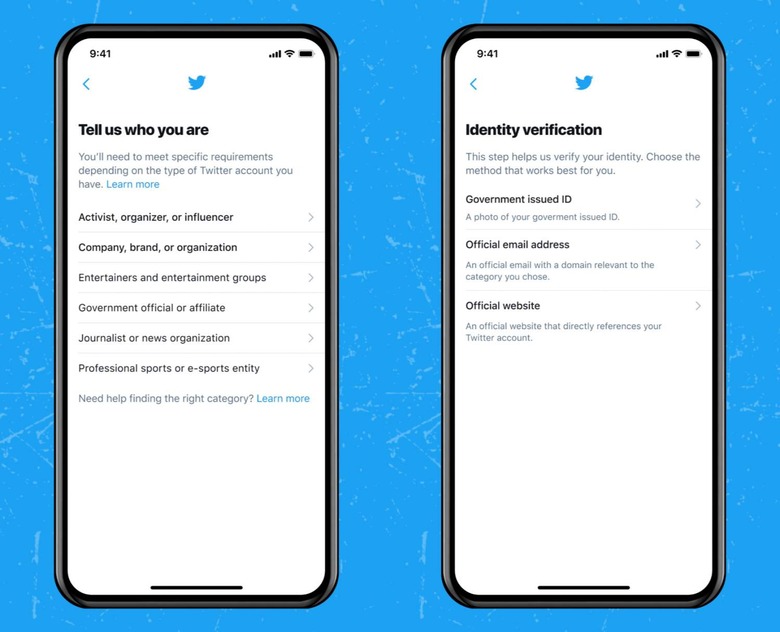Twitter Verification Reopens: Here's How Applications Work
Twitter is relaunching verification, opening up the blue check program after reworking its confusing – and at times controversial – policies. The social network has long used a blue logo on usernames to identify that individuals are who they say they are, but questions about just what degree of trustworthiness that implies had forced Twitter to go back to the drawing board to rework the system.
It's been a few years since Twitter – officially, at least – decided to stop its existing verification program. Since then, new blue checks have been added, but the method by which that's happened has been even more circumspect.
Lending to the confusion, verification has also been used as a way of punishing users as well. Contravening Twitter rules has seen some people lose their blue tick, for instance, and changing your username can also lead to it disappearing. Questions around whether individuals or news organizations which share and promote "fake news" or even help incite violence such as that at the US Capitol on January 6 should keep their verification mark has only made the process murkier.
Last November, Twitter said it had reworked its system and would launch it in due course. Today, it's getting the first roll-out, complete with new verification guidelines.

"These verification guidelines are intended to encourage healthy conversations for the betterment of the Twitter community overall," the company explained today. "They follow the philosophy to lead by example, Tweet others how they want to be Tweeted, and serve the public conversation authentically, respectfully, and with consideration. As always, all accounts, including verified accounts, must follow the Twitter Rules. And as we previously shared, verified accounts that repeatedly violate the Twitter Rules are subject to have the blue badge removed."
Those who want to be verified will need to have a complete account, including a profile name, profile image, and either a confirmed email address or phone number. They'll also need to have been active within the past six months, and "a record of adherence to the Twitter rules," the company warns. If you had a 12 hour or 7 day lockout within the past 12 months for violating those rules, for example, you won't be able to get verified. Finally, they'll have to fall into one of six categories:
Government
Companies, brands and organizations
News organizations and journalists
Entertainment
Sports and gaming
Activists, organizers, and other influential individuals
As for how you apply, Twitter will be adding a verification application option in the Account Settings tab. From there you'll be able to choose a relevant category, and then verify your identify – either with government-issued ID, an official email address, or an official website – after which point Twitter will process the application.
"Once you submit your application, you can expect an emailed response from us within a few days, but this could take up to a few weeks depending on how many open applications are in our queue," Twitter explains. "If your application is approved, you'll see the blue badge automatically on your profile. If you think we made a mistake, reapply 30 days after receiving our decision on your application."
There'll be new categories added later in 2021, Twitter says, such as for scientists, academics, and religious leaders. Automated accounts, which tweet automatically, will also be supported as account types in due course, and there'll be a way to memorialize accounts for users who have died.
Access to the new verification application will be rolling out to all Twitter users over the coming weeks. Meanwhile, leaks have hinted that a new, paid subscription option is in the pipeline, complete with premium features only accessible if you pay a fee.
